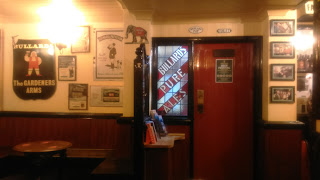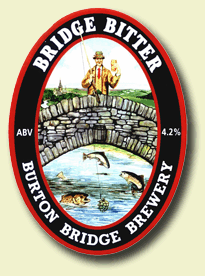A flying visit to Norwich
at the weekend saw my son Matt and I making an equally flying visit to one of
the city’s most iconic and best known pubs. I am talking, of course, about the
legendary Fat Cat. We were staying in Norwich
for the evening prior to visiting my father the following day. We also planned to call in at the
Beers of Europe warehouse, which is just south of Kings Lynn, on the way home (more about that another time).
Our hotel was to the west of Norwich
city centre, but a spot of prior research showed there are frequent buses
running into the city; a factor which made a visit the Fat Cat perfectly
feasible without having to drive there.
I had been to the Fat Cat on one previous occasion. That was
three and a half years ago, when I was in Norwich
for the 2013 CAMRA AGM. On that visit the pub was absolutely heaving; hardly
surprising really given the thousand or so CAMRA activists present in the city.
I didn’t stay long; not because I didn’t like the crowds, but because I had
arranged to meet up there with a number of friends from Maidstone CAMRA as a prelude
to going for a curry.
What immediately struck me about the Fat Cat was the
maze-like interior of the pub, with a several different rooms and numerous
alcoves where one could sit with a small group of friends, or just on one’s
own, assuming you chose a quiet time to visit that is!
The beer range too is nothing short of amazing, with around 12
ales on hand-pumps, plus nearly double that number on gravity, straight from casks
kept in a room behind the bar. The pub has its own brewery - the Fat Cat Tap, which forms part of
the chain of three “Fat Cat” pubs, and there are always several Fat Cat beers
on sale.
Now before you all start screaming “beer-exhibition pub” at
me, let me say the volume of trade at the Cat is sufficient to ensure a good
turnover of beers. Prices too are very keen, averaging around £3.40 - £3.60 a
pint, with a few priced at £3.20. The pub’s own Fat Cat Bitter 3.8% retails at
just £2.70! Cider lovers are also well catered for, with up to 20 traditional ciders
available on draught (mainly from poly-kegs or poly-pins), plus getting on for
15 in bottled form.
As I mentioned above, Saturday’s visit was a rather fleeting
one. Apart from pre-prepared rolls, and these often run out by the evening, the
Fat Cat doesn’t do food. Now food figures quite highly on the “must have” list
of twenty-something males, and sixty-something males are also quite partial to
a bit of nourishment, particularly when a night on the beer is contemplated. So
the dilemma was beer first and food later, or the other way round?
Walking down to the bus stop we noticed a large, modern
steakhouse-cum-carvery, virtually opposite our hotel. That made our minds up;
we would take the bus to the Fat Cat first, and then grab something to eat when
we got back. It was just a five minute walk to the bus stop, and then the same time
interval before a bus arrived. I knew roughly where we needed to alight, so
after purchasing a couple of return tickets, we sat down and enjoyed the ride
into town.
After getting off the bus, we found our way to the Fat Cat
without any trouble – I am pretty good when it comes to remembering my way to a
pub, especially if it is one worthy of re-visiting! Fortunately, although busy,
the pub was nowhere near as crowded as it had been three and a half years ago,
and after ordering our drinks, we managed to find a spare table at the far end
of the pub.
To start with I had an excellent pint of Lacon’s Legacy; a
beer which has become a firm favourite of mine on visits to East
Anglia. Later on I switched to Green Jack Mahseer IPA, which at 5.8%, represents the other end of the strength scale.
Matt, being a committed lager drinker, went for the Bitburger, although he
could also have had Budvar or Menabrea. The latter is a new one on me, but it
is produced by a family-owned brewery in the town of Biella,
in the foothills of the Italian Alps.
We shared our tucked away corner of the pub with three other
groups of customers, and the mix of different age-groups and persona is another
plus point. What I particularly like is the extensive collection of advertising
breweriana; much of which relates to old Norwich
and East Anglian brewers. For example, there is memorabilia from the likes of Bullards,
Morgans, Steward & Patteson, all of whom once brewed in Norwich. Closer to
home, there was an old Fremlins elephant; the proud symbol of a company who,
until their takeover by Whitbread, were by far Kent’s premier brewers. It was Whitbread,
of course, who also did for the original Lacon’s company, who brewed in Great
Yarmouth, so it is especially good to see old name resurrected in the form of
today’s modern successor.
It would have been nice to have stayed for a third pint, but
the lad was getting hungry, so reluctantly (on my part), we made our way back to the bus
stop. For some reason we had a half-hour wait; doubly annoying as we could have
stayed in the warmth of the pub and enjoyed another pint.
The steak-house was certainly a disappointment beer-wise,
with a flat, tired pint of Adnam’s Southwold which, whilst not quite bad enough
to take back, was definitely passed its best. The food options were also rather
limited as the restaurant had been rather busy earlier, but my fish-pie was tasty
enough; as was Matt’s burger.
I’m pleased we managed to fit in a return visit to the Fat Cat. As a pub, I would say it does everything right. With an amazing range of
mainly local beers, traditional ciders plus some higher quality continental lagers, it is a genuine wet-led pub which attracts a wide and varied selection
of customers, drawn from all walks of life. There is no annoying piped muzak,
or other electronic noise to distract from conversation. It is definitely the type
of pub I would love to have as my local, and if I lived nearby, you would find
me in there most nights!
Footnote: apologies for the low quality photos, which were taken using my
phone, rather than my camera.

























